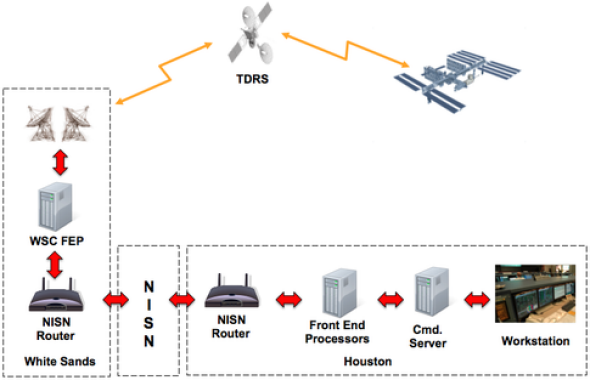This question originally appeared on Quora.
Answer by Robert Frost, NASA instructor and engineer in the Mission Operations Directorate:
A mission control center, or MCC, is a facility from which personnel operate remote resources needed to conduct a mission. In the case of NASA, that usually means a spacecraft. Below is a picture of MCC-H, the NASA MCC for the International Space Station located in Houston.

Courtesy of NASA
But that isn’t the only MCC involved in operating the ISS. There are also control centers in Alabama, Russia, Germany, France, and Japan, as well as control centers for visiting vehicles. Each control center has resources they are responsible for. For example, the control center in Alabama controls onboard payload experiments. The one in Toulouse, France, controls the ATV cargo vehicle. Ultimately they coordinate through MCC-H, as the integrating control center.
Each control center operates a little differently—sometimes for historical reasons and sometimes for vehicle related reasons. I’m going to focus on the MCC-H. As is evident from that top picture, there is a team of people working in the MCC. Each of those people are a certified flight controller for a particular discipline (e.g., electrical power, thermal control, trajectory, planning, etc.). They trained for one to three years (depending on the complexity of the discipline) and were thoroughly evaluated in simulations before they were allowed to sit in this room.
The desks they sit at are called consoles. At each of those consoles are several monitors. One is used as a standard work PC. They use it to access procedures, flight rules, timelines, and other references, and they use it to complete required paperwork such as their console logs. The remaining monitors are used for access to commanding and telemetry for the vehicles they are controlling. There are also some smaller screens visible in the picture. Those are for the audio communication system. Each flight controller wears a headset. All official mission-related conversations happen via that headset and a set of loops (channels).
Because the ISS is an extremely complicated and large vehicle, most of the flight controllers are command certified and do directly send commands to the vehicle. Control centers of less complex vehicles often route commanding through a single flight controller. Some commands have the potential to cause great hazard to the vehicle and/or mission timeline, therefore commanding is carefully controlled.
The team of flight controllers is under the direction and supervision of a person called a flight director. A flight director is a senior management-level position, and the office is generally populated by people who have great experience as flight controllers and managers. The flight director is the person ultimately responsible for the vehicle. All commanding to the vehicle must be approved by the flight director. If a flight controller needs to execute a procedure, he will activate the microphone on his headset, select the flight director loop on the communication system and make a call like: “Flight, this is ADCO. Per the timeline, I’d like a GO to execute procedure 2.103 Momentum Management Preparation and Activation.”
Flight will respond: “You have a GO, ADCO,” or if he determines there are more critical actions to be taken at this time, he may ask the controller to stand by. ADCO (the attitude determination and control officer) will then deactivate talk on the flight loop and activate talk on another loop that is used to announce commands as they leave the building.
The path that commands and telemetry follow looks like this:

Courtesy of Robert Frost
The flight controller will access a command, from the command server, via his workstation. When he sends that command, the command server formats it correctly and forwards it to the front-end processors that will take that command and any other commands from the rest of the room and package them properly for uplink to the vehicle. It then sends that packet of information over a secure network to White Sands, New Mexico, where a satellite dish will transmit the packet to the Tracking and Data Relay Satellite System, which will then transmit it to the ISS. The command will have its effect and change the status of one or more pieces of telemetry, which will follow the same path (minus the command server) back to the workstation where the flight controller will see it and note: “Good end item.”
Next sits CapCom. CapCom is a legacy name. It is short for capsule communicator, a term that made perfect sense during the Mercury, Gemini, and Apollo programs, but is a little cryptic today. If the MCC needs to talk to the crew or the crew to MCC, it is usually CapCom that speaks for the ground. CapComs are usually, but not always, other astronauts. Having similar backgrounds to the astronauts onboard, they know how to translate the flight controller–speak into astronaut-speak to ensure communication to the onboard crew is as clear as possible.
At the front of a typical MCC are large screens that show information of interest to everyone in the room. This often includes any live camera feeds from the vehicle; a groundtrack map showing the location of the vehicle; a display showing any cautions, warnings, or emergencies that are in alarm; clocks indicating upcoming events; and the status of the comm link to the vehicle.
More questions on Quora: